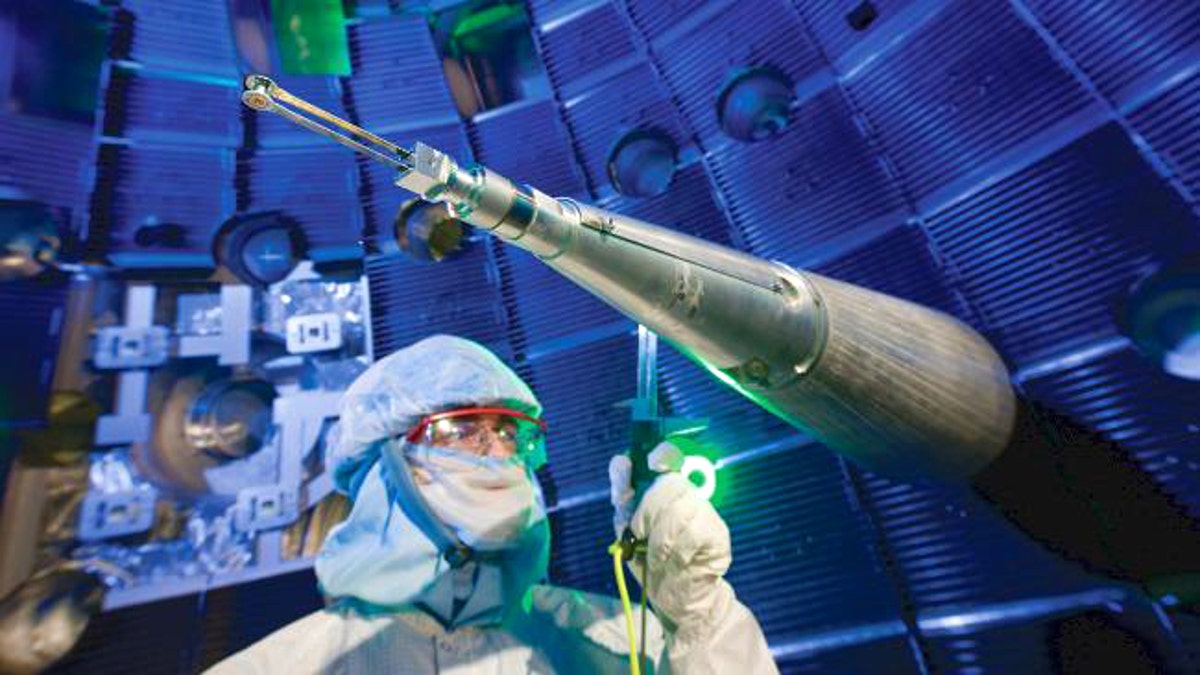
Creating a tiny sun will be "like watching the Wright Brothers fly", scientists say. (Lawrence Livermore National Laboratory)
Scientists are using the world's largest laser in an attempt to build a star on Earth.
The laser at the Lawrence Livermore National Laboratory in California is roughly the size of three American football fields, and those in charge of it are not joking when they say they will create a tiny sun in the next few months.
It is called the National Ignition Facility and is all about finding the holy grail of energy production -- nuclear fusion -- a high-energy reaction that would theoretically provide limitless energy for humanity.
The laboratory hopes to split its laser beam up into 192 beams, then fire them at a tiny target wrapped in gold that is smaller than a fingernail.
The heat from the laser will fuse those isotopes together in a reaction at 100 million degrees Celsius, more than five times hotter than the center of the sun.
There is a slight radioactive danger, but the lab has encased the facility in concrete walls that are two meters thick, just in case. But the pay-off is that if the isotopes fuse, the tiny star will emit enough energy to power the Earth.
That is, for the 200 trillionths of a second that it survives.
"It's the most fundamental energy source in nature," project manager Bruno Van Wonterghem told CNN.
If it is successful, the laboratory hopes the project, which has so far been five years in development, will deliver usable outcomes within 20 years.
"This is something you're going to tell your grandchildren about," Van Wonterghem said.
